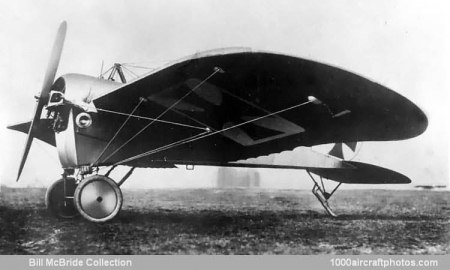02/28/2010. Son of Swedish parents, Villehad Henrik Forssman (April 26, 1884, Wyborg, Finland, February 10, 1944, Hannover, Germany) studied machine construction at the Riga Polytechnic Institute (Riga, Latvia) between 1903-1910. In 1910-1911 he constructed a small soft-type dirigible (28,252 cu.ft, 800 cu.m) at the firm of August Riedinger, Augsburg, Germany.
From 1911 to 1914, Forssman was employed by Prince Sigimund von Preussen in Potsdam, and in that period lectured, discussed, and published aeronautical (engineering) articles and held speeches at the Reichsflugverein (an association for aviation engineers) in Berlin. He also designed and constructed a personal aircraft for the Prince, the Bulldogge (Bulldog), a name derived from the blunt nose of the aircraft. It was powered by an 80 hp engine and first flew in 1914.
In 1914 Forssman joined an electrical equipment manufacturer, the Siemens-Schuckert Werke in Berlin, which had also a modest aeronautical experience since 1908, by building a large soft-type dirigible and three small airplanes. Eight weeks after WW I began (August 1, 1914), Forssman suggested the production of a Kavallerie-Flieger (cavalryplane) based on the Bulldogge, and construction of two aircraft was started as a private venture at the Dynamowerk (Generator works) at Berlin in early October.
One aircraft was fitted with an 100 hp Mercedes liquid-cooled engine, the other with an 100 hp Siemens & Halske rotary engine. Both aircraft were first flown in late March, early April 1915, at the Johannisthal airfield outside Berlin.
The Mercedes engined Bulldogge was returned to the Dynamowerk on July 14, 1915, in order to be modified and equipped with a Siemens & Halske rotary engine. The modifications and engine change are not documented, fact is the aircraft was dismantled in the autumn of 1916.
The other aircraft was used in different experiments, including the tests of flying bombs, at an airfield near Neumunster in northern Germany till August 16, 1916. Thereafter it was also returned to the Dynamowerk and subsequently dismantled.
